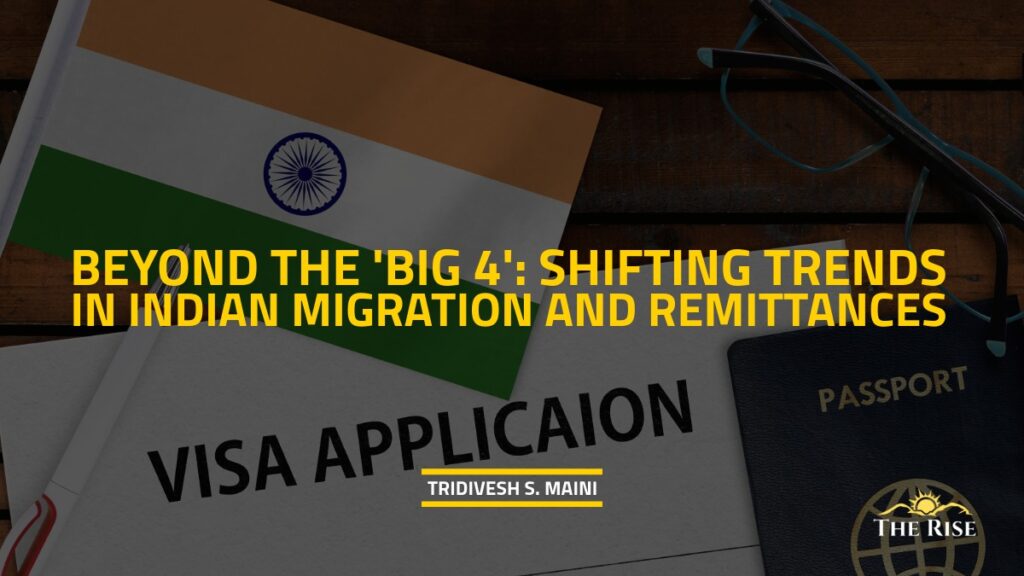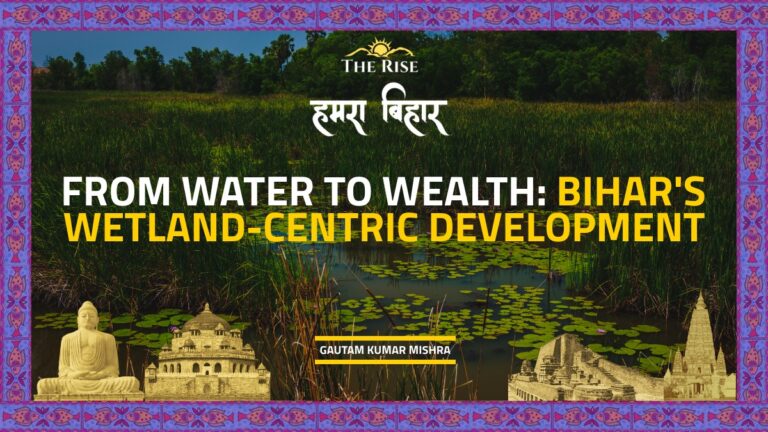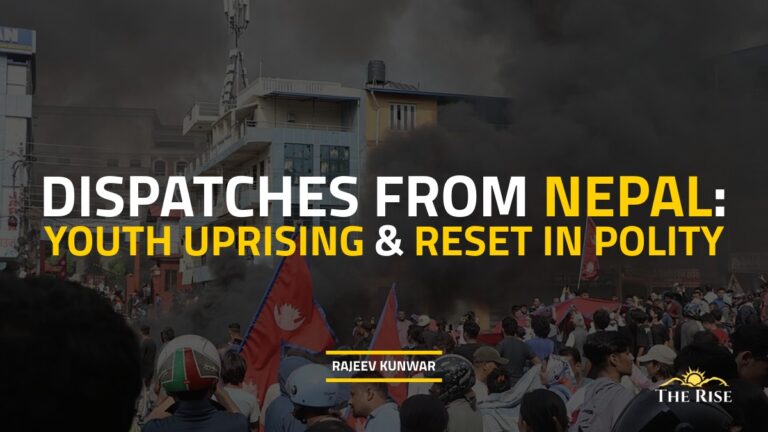Governments need to keep individuals informed about changes in the immigration landscape. Both state and central authorities must be prepared for the return of migrants, ensuring that those with skills and entrepreneurial potential are productively integrated into the economy. In the long run, there is no escape from devising policies which create opportunities back home, so that individuals migrate because of ‘pull’ factors and not ‘push’ factors.
In recent years, changes in migration policies, student visa norms, and professional opportunities across several Western countries have influenced migration patterns from India. As expected, outward migration has grown significantly. Between 1990 and 2024, the number of Indian emigrants rose from 6.5 million to 18.5 million, marking a sharp increase over the past few decades.
This shift has also been reflected in remittance trends. Inflows from Western countries have steadily increased, while remittances from Gulf nations have seen a noticeable decline.
Also Read: From London to Dubai: How Immigration Changes Are Redirecting Student Flows
Indian students are looking at alternatives to what have been dubbed as the “Big 4 countries” in terms of international higher education – the US, UK, Canada and Australia. In recent years, the number of students going to European nations such as Finland, Germany, France and New Zealand has increased significantly. It would be pertinent to point out that before countries in the Anglosphere and Australia made changes to their immigration policies, for several years, there had been a steady rise in Indian students going to these countries.
Trends in migration from India
Similarly, there has been a rise in Indian students going to New Zealand and the UAE. While High Networth Individuals (HNIs) earlier preferred European Golden Visas, they have also begun to look at alternatives.
Also Read: Rethinking Global Education Trends
There are also likely to be major changes in the trends of migration of professionals from India. The UK, for instance, has started a ‘Global Talent Visa program’, which seeks to attract individuals with special qualifications and skills, especially in the realm of technology. This program aims to strengthen the UK’s tech sector. The recently signed India-UK Free Trade Agreement also has important provisions related to the mobility of manpower and professionals. Several Golden Visas are focusing on attracting professionals.
State-wise trends in Migration
It is also interesting to note that state-wise trends of migration are witnessing a shift. For instance, earlier, the bulk of migration to Kerala was from the Gulf. Recent years have witnessed a drop not just in the migration of blue-collar workers from Kerala, but other South Indian states – Telangana, Andhra Pradesh, Tamil Nadu. However, migration from North Indian states like UP and Bihar to Gulf countries has remained high.
Within the Indian expat community, Malayalis form one of the largest groups, though migration from other states is also expected to grow. Increasingly, Kerala’s youth are exploring opportunities in the West, Australia, and European nations. The main reason for the same is the lure of residency and citizenship, as well as high-quality education and job opportunities. It would be interesting to see how, in the longer run, a dip in individuals going to the Gulf would impact the state’s economy, since Kerala is dependent upon remittances from the Gulf. It would also be interesting to note how those from Kerala seeking to migrate to Australia and Canada deal with the changes in the immigration policies of both these countries.
Other South Indian states, especially Karnataka, Telangana and Andhra Pradesh have a significant diaspora in the US (with several of them being in the IT sector). The US has been the favoured destination for students from these states. This trend is also likely to change given the current changes in the US immigration policy. Either individuals from these states could look at alternative options within the Anglosphere, or they will tap opportunities in EU nations like Germany and Finland and other non-western countries like UAE, New Zealand, Singapore, etc.
If one were to look at the case of Gujarat, there has been less enthusiasm among students, from the state, for pursuing higher education in the “Big 4” countries, and they too are beginning to look at alternatives. This will also have a significant impact on migration from the state.
For years, Punjab sent a large number of students and migrants to the Anglosphere and Australia. However, this trend has seen a dip in recent years. In Punjab’s case, this decline is a positive case scenario, rather than receiving robust remittances, in recent years the state has sent out more money (with not just students and immigrants, but even their families selling their assets to move out). The tightening of immigration rules — especially student visa rules — could motivate youngsters to explore opportunities back home. This may be tough in the short run, but in the long run, it would be beneficial for the state.
A pragmatic approach towards overseas migration
Migration is a reality, and neither the central government nor the state government can have a blinkered view. An acceptance of migration as a reality is essential. While immigration should not be encouraged by governments, it needs to be accepted, and those migrating should be made aware of their rights, as has been done by several states, including Kerala. Having a record of individuals migrating abroad also makes it easier for governments to step in more effectively in case of any problems.
Governments also need to keep individuals informed about changes in the immigration landscape. Both state and central authorities must be prepared for the return of migrants, ensuring that those with skills and entrepreneurial potential are productively integrated into the economy.In the long run, there is no escape from devising policies which create opportunities back home, so that individuals migrate because of ‘pull’ factors and not ‘push’ factors. The scholarship on migration, diaspora and remittances also needs to look at the new trends in higher education and immigration and examine trends not only at a national level, but also state-wise. The changes which are taking place in these sectors will have an enormous economic impact on several states.
Disclaimer: The views expressed in this article are of the author solely. TheRise.co.in neither endorses nor is responsible for them. Reproducing this content without permission is prohibited.
About the author
Tridivesh Singh Maini is a New Delhi-based Policy Analyst. He is faculty member of OP Jindal Global University, Sonepat, Haryana.










